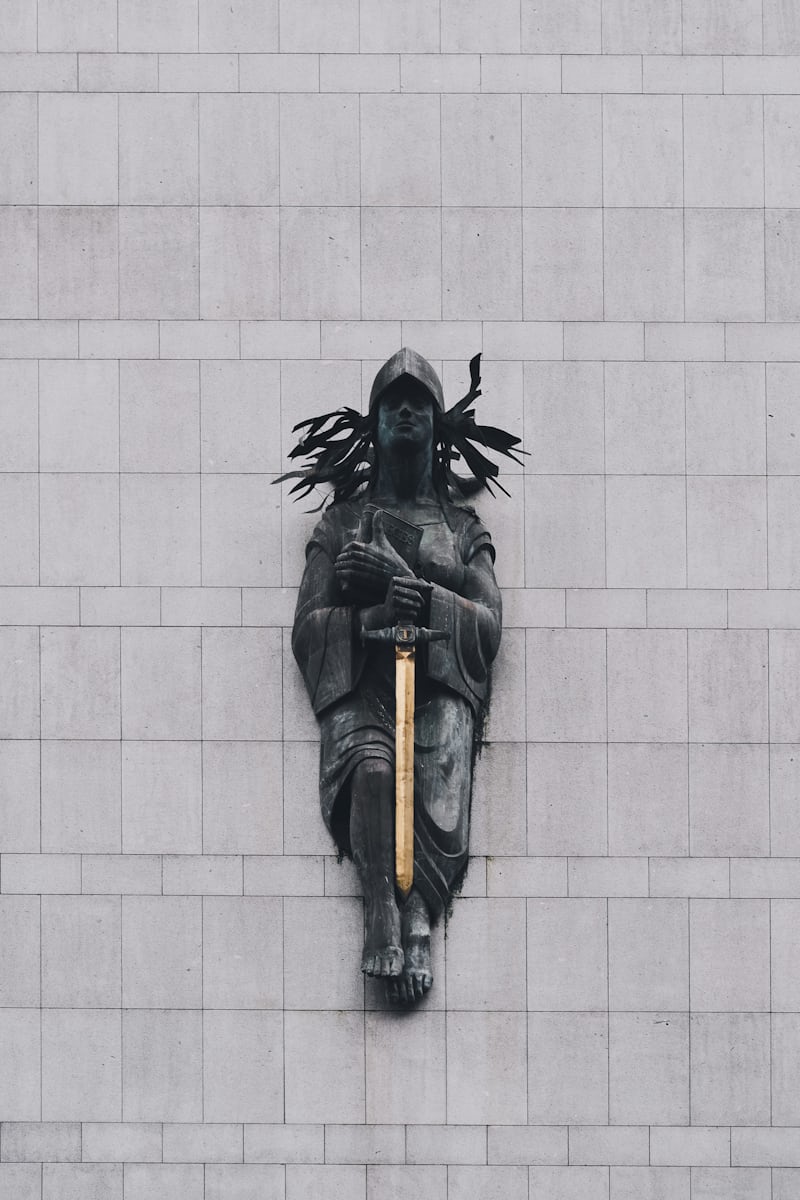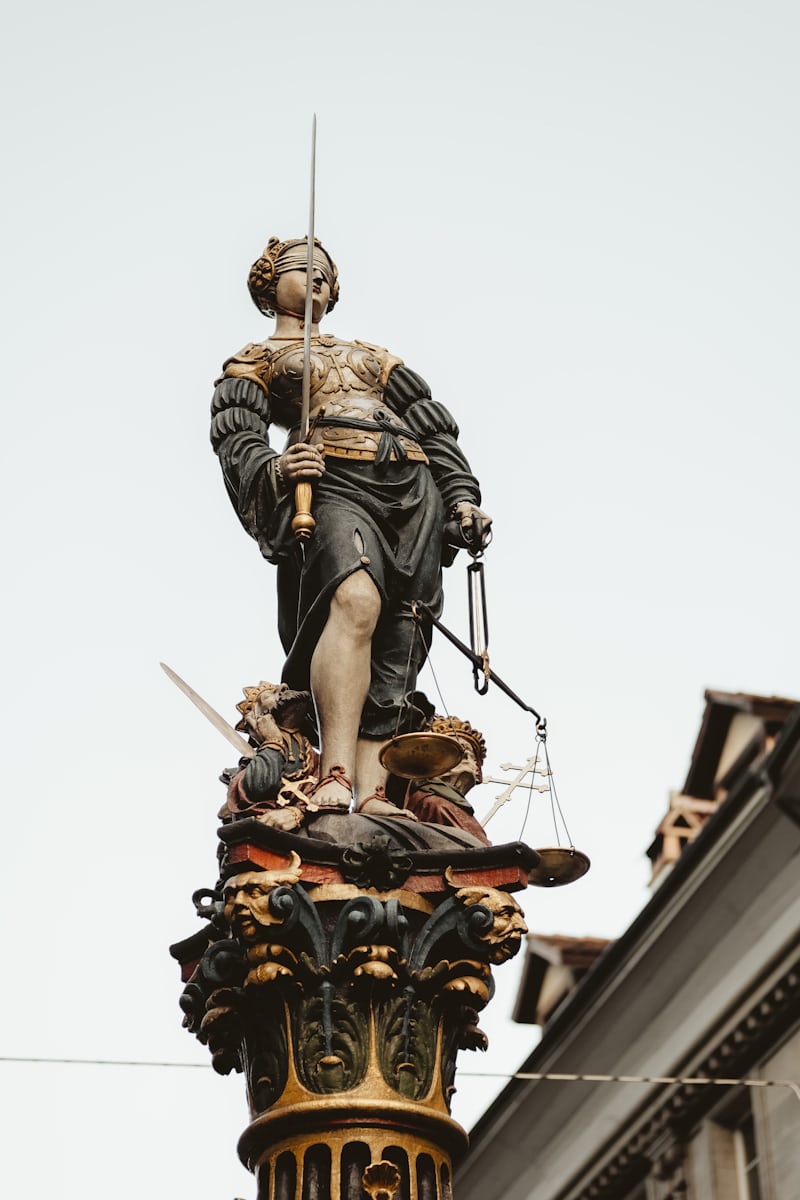INTRODUCTION
Have you ever seen a statue of a woman wearing a blindfold, holding a sword and a pair of scales? That’s the Lady of Justice! She’s a symbol of justice and fairness, and she’s been around for centuries.
SOURCE: TINGEY INJURY LAW FIRM
In today’s article, we would be assessing the history of lady justice, her symbolism, and her relevance in the modern world, we would also be looking at some famous lady justice statues around the globe.
The Lady of Justice statue has its origins in ancient Egypt and Greece. In Egypt, the goddess Maat was depicted as a woman holding aloft a feather of truth. This symbolized her role as the guardian of truth and justice. In Greece, the goddess Themis was also associated with justice. She was often depicted holding a pair of scales, which represented her fairness and impartiality.
The Roman goddess Justitia is the closest precursor to the modern Lady of Justice statue. She was depicted as a woman wearing a blindfold, holding a sword and a pair of scales. The blindfold symbolized her impartiality, the sword represented her power to punish, and the scales represented her fairness.
The Lady of Justice statue has become a popular symbol of justice in the modern world. It is often displayed in courtrooms and other legal settings. The statue is also a popular subject of art and literature.
SOURCE: ANDRE PFEIFER
So next time you see a statue of the Lady of Justice, remember that she’s a symbol of something very important: the pursuit of justice for all.
Fun fact: The Lady of Justice statue is sometimes called “Blind Justice” because she is blindfolded. This symbolizes her impartiality, or her willingness to judge everyone fairly, regardless of their wealth, status, or social standing.
“Quick Question: What do you think the Lady of Justice represents? Is she a symbol of hope, or a reminder of the challenges of achieving justice?”
The Origins of the Lady of Justice Statue
The Lady of Justice statue has its origins in ancient Egypt and Greece. In Egypt, the goddess Maat was depicted as a woman holding aloft a feather of truth. This symbolized her role as the guardian of truth and justice. In Greece, the goddess Themis was also associated with justice. She was often depicted holding a pair of scales, which represented her fairness and impartiality.
The Goddess Maat
The goddess Maat was a central figure in ancient Egyptian religion. She was the goddess of truth, justice, and balance. Maat was often depicted as a woman wearing a feather of truth on her head. The feather symbolized her role as the guardian of truth and justice. Maat was also associated with the scales, which were used to weigh the hearts of the dead in the afterlife. If the heart was lighter than the feather, the person was allowed to enter the afterlife. If the heart was heavier than the feather, the person was condemned to eternal punishment
The Goddess Themis
The goddess Themis was also associated with justice in ancient Greece. She was the daughter of the Titans Oceanus and Tethys. Themis was often depicted as a woman holding a pair of scales. The scales symbolized her fairness and impartiality. Themis was also associated with law and order. She was the one who gave the laws to the gods and goddesses of Mount Olympus
The goddesses Maat, Themis, and Justitia all represent the importance of justice, fairness, and impartiality. They are a reminder that justice should be blind to personal biases and that everyone should be treated equally under the law.

The Roman goddess Justitia
The Roman goddess Justitia is the closest precursor to the modern Lady of Justice statue. She was depicted as a woman wearing a blindfold, holding a sword and a pair of scales.
Justitia was the Roman goddess of justice, law, and order. She was the daughter of Jupiter and Themis. Justitia was often depicted as a woman wearing a long white robe and a blindfold. She held a sword in one hand and a pair of scales in the other. The sword represented her power to punish, while the scales represented her fairness. The blindfold symbolized her impartiality, as she was not supposed to be swayed by personal biases or prejudices.
The Roman goddess Justitia was adopted by the early Christian church as a symbol of justice. She was often depicted in paintings and sculptures, and her image was used on coins and other legal documents.
The statue of Lady Justice as we know it today began to appear in the 16th century. It was during this time that the concept of the rule of law was becoming more widely accepted in Europe. The Lady of Justice statue came to represent the ideals of the rule of law, such as fairness, impartiality, and the right to a fair trial.
The Lady of Justice Statue In The Modern World
The Lady of Justice statue has been criticized by some for being too idealized. They argue that the statue does not reflect the reality of the legal system, which is often biased and unfair. However, the Lady of Justice statue remains a popular symbol of justice and hope. It is a reminder that we should strive for a more just and equitable society.
The Lady Justice statue is found in places such as courtrooms, Law schools, Museums, Libraries, Public parks, and homes.
The Lady of Justice statue is a reminder of the importance of justice, fairness, and impartiality in our society. It is a symbol of hope for a more just and equitable future.
Post time: Sep-04-2023



